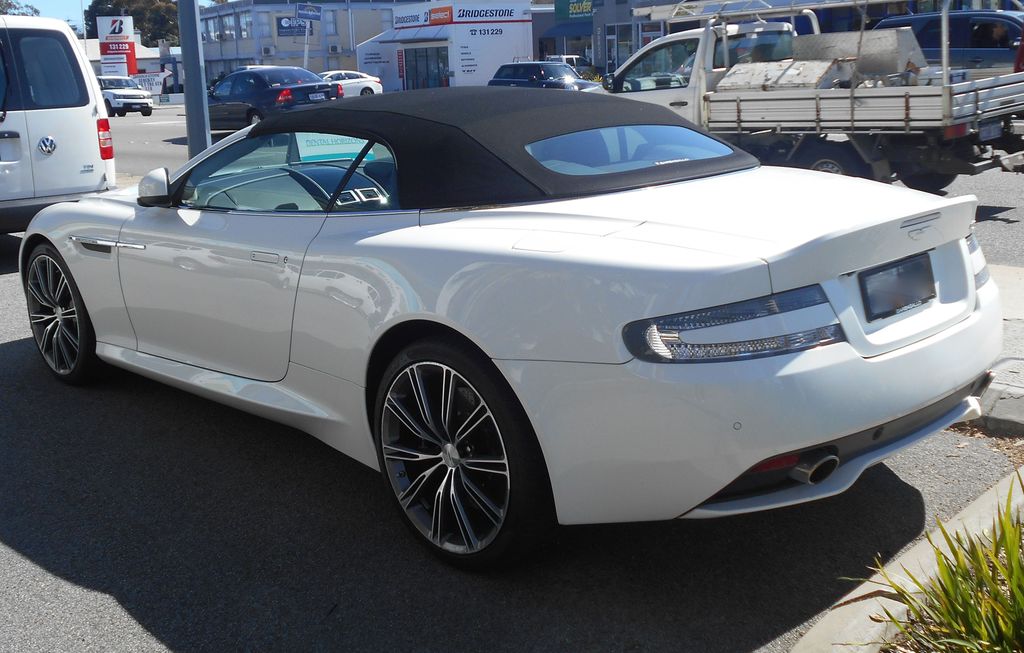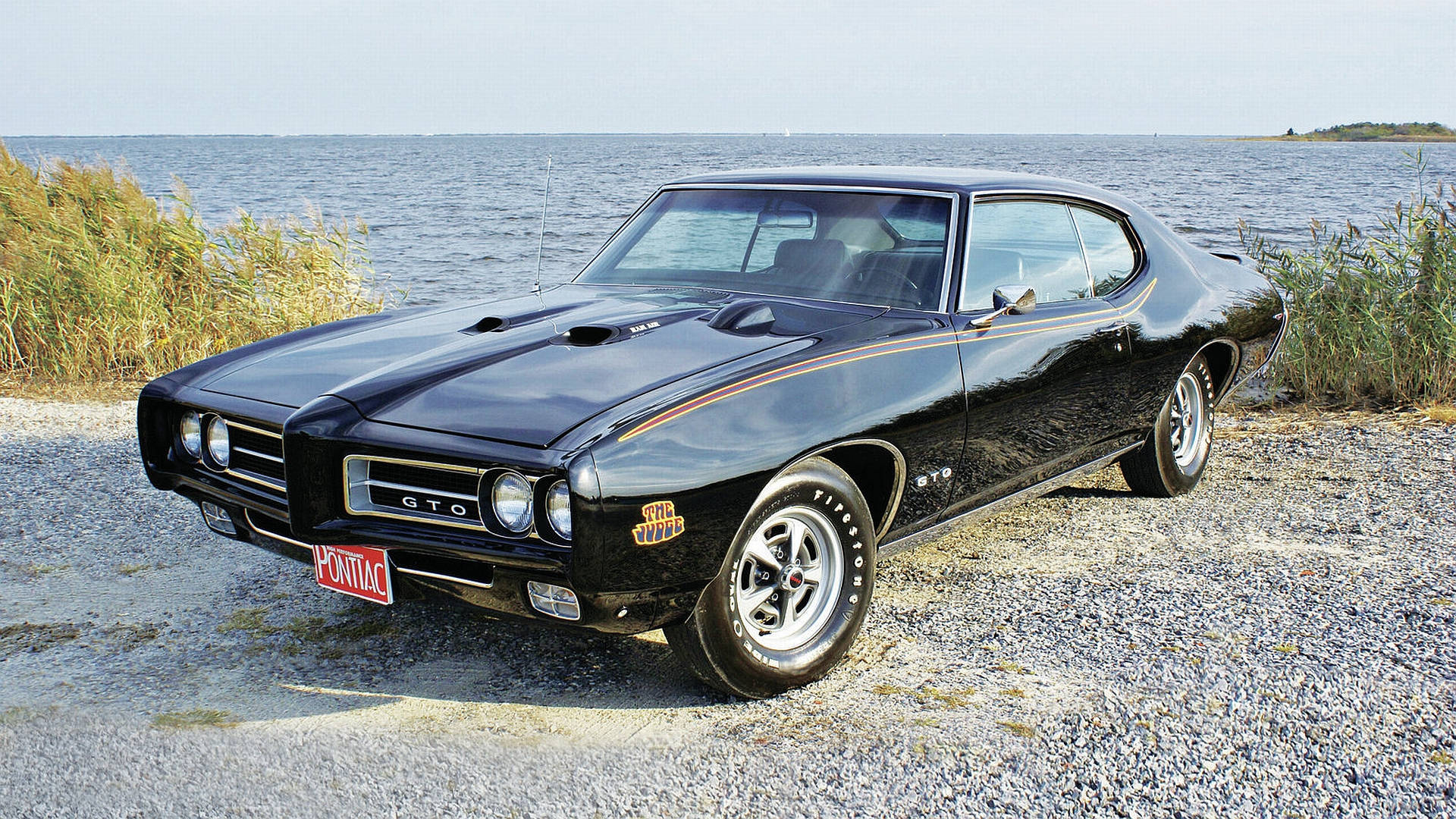
Ah, Pontiac. The very name conjures images of roaring V8s, sleek lines, and a certain rebellious spirit that few other marques could ever truly capture. Though the brand may be long gone from the forecourts, its greatest hits still hold their ground with formidable force, and in many cases, their value continues to climb. Whether it was a GTO lighting up the street, a Trans Am dominating the silver screen, or a Super Duty Catalina setting dragstrip records, Pontiac truly knew how to build cars that left an indelible mark on the asphalt, and in our hearts.
This once-famous brand, tragically, fell victim to the global recession and a sharp drop in car sales. When General Motors filed for bankruptcy and dealt with the government bailout, management decided to get rid of the nameplates that weren’t making a profit. Time will tell if this was truly a smart decision, but economics aside, car enthusiasts still mourn the profound loss of this legendary brand, a brand that consistently delivered excitement and raw, unadulterated passion on wheels.
Pontiac initially started its journey as an economy version of the long-defunct Oakland brand, finding its footing and popularity in the mid-1920s. Established as a company in 1926, by the early 1930s, it had blossomed into one of the bestselling GM nameplates, quickly promoted to a separate, fully-fledged division. While Pontiac generally sat above Chevrolet and below Oldsmobile and Buick in terms of luxury and price, it wasn’t until a pivotal shift in philosophy that the brand truly found its voice.
This crucial transformation occurred when the company wholeheartedly adopted a performance image, actively building a motorsport heritage that would resonate for decades. This bold move truly transformed it into one of the most dynamic and exciting brands on the U.S. car market. This was the winning formula, and from that point forward, Pontiac began offering a stylish combination of performance and luxury that appealed to millions upon millions of customers, forging an identity that was unmistakably its own. So, prepare yourselves, because we’re about to dive deep into ten of the best Pontiacs they ever made.
These infamous cars didn’t just move; they left an everlasting mark in automotive history. These influential models, with their legendary shapes and groundbreaking designs, truly presented something new and different from regular GM products. Just browse this list, and you’ll undoubtedly see why GM made a colossal mistake by prematurely killing this magnificent brand in 2010. It’s a journey into automotive greatness, and we’re here to celebrate every glorious mile.

1. **1964 Pontiac GTO – The Original Muscle Machine**Imagine the scene: 1964. The automotive world was rumbling, but it was the 1964 Pontiac GTO that didn’t just launch a car; it detonated an entire movement. It was the moment the term ‘muscle car’ truly came into its own, thanks to John DeLorean’s audacious decision to cram a big engine into a mid-sized car. Based on the relatively unassuming Tempest platform, this GTO arrived with a fearsome 389 cubic inch V8, capable of churning out a breathtaking 348 horsepower when paired with the legendary Tri-Power carburettor setup. It was a potent combination that promised pure, unadulterated speed.
This wasn’t just a straight-line bruiser, though it excelled at that. You could spec it with a proper 4-speed manual transmission and a limited-slip rear differential, immediately transforming it into a serious performer right out of the gate, capable of more than just flexing its muscles at the stoplight. In that inaugural year, Pontiac sold approximately 32,450 GTOs, setting a new, electrifying standard for every muscle car that dared to follow. It was a phenomenon, a declaration that performance cars didn’t have to be exotic or unobtainable.
Step inside the GTO, and you’d find an interior that was, by today’s standards, basic. However, it was intentionally and brilliantly driver-focused, exuding an air of purposeful sportiness. With inviting bucket seats and a clear, sporty dash, it was a cockpit designed for the serious enthusiast, not just a comfortable cruiser. This GTO was undeniably the right car at the absolute right time, perfectly tapping into the burgeoning desire for powerful, affordable performance. Even today, its value holds firm, a testament to its enduring legacy and groundbreaking impact.
Indeed, the context of the GTO’s creation is fascinating; “Under the leadership of John DeLorean, Pontiac’s division at GM created an option package for its intermediate LeMans model in 1964, which many claim to be the first genuine ‘muscle car.'” This clever re-packaging and audacious vision transformed a standard sedan into a legend, effectively creating a new automotive genre. Its immediate popularity propelled it to become a stand-alone model within just a couple of years, proving its overwhelming appeal and market demand.
The GTO’s influence cannot be overstated, continuing to reverberate through automotive culture. Even with later iterations, including the “2004 revival of the GTO — a rebadged Australian-built Holden Monaro built until 2006 — has potential for appreciation,” the original ’64 remains the cornerstone. Whether you dream of the initial groundbreaking model or a later, perhaps more refined, variant, “No matter which GTO you might want, it’s likely to be a worthwhile investment,” a piece of pure American automotive history.
Car Model Information: 1966 Pontiac GTO Coupe
Name: Pontiac GTO
Caption: 2005 Pontiac GTO
Manufacturer: Pontiac (automobile),Holden
Class: Mid-size car,Compact car,Mid-size car
Production: 1963–1974,2003–2006
Predecessor: Pontiac Tempest
Layout: Front-engine, rear-wheel-drive layout
ModelYears: 1964-1974 2004-2006
Categories: 1970s cars, 2000s cars, All articles with unsourced statements, Articles with short description, Articles with unsourced statements from October 2008
Summary: The Pontiac GTO is a front-engine, rear-drive, two-door, and four-passenger automobile manufactured and marketed by the Pontiac division of General Motors over four generations from 1963 until 1974 in the United States — with a fifth generation made by GM’s Australian subsidiary, Holden, for the 2004 through 2006 model years.
The first generation of the GTO is credited with popularizing the muscle car market segment in the 1960s. Some consider the Pontiac GTO to have started the trend with all four domestic automakers offering a variety of competing models.
For the 1964 and 1965 model years, the GTO was an optional package on the intermediate-sized Pontiac LeMans. The 1964 GTO vehicle identification number (VIN) started with 22, while the 1965 GTO VIN began with 237. The GTO was designated as a separate Pontiac model from 1966 through 1971 (VIN 242…). It became an optional package again for the 1972 and 1973 intermediate LeMans. For 1974, the GTO was an optional trim package on the compact-sized Ventura.
The GTO model was revived for the 2004 through 2006 model years as a captive import for Pontiac, a left-hand drive version of the Holden Monaro, itself a coupé variant of the Holden Commodore.
Get more information about: Pontiac GTO
Buying a high-performing used car >>>
Brand: Pontiac Model: GTO
Price: $59,991 Mileage: 4,408 mi.
Read more about: Get Ready to Rev Your Engines: A Deep Dive Into Val Kilmer’s Jaw-Dropping Car Collection, Both On-Screen and Off!
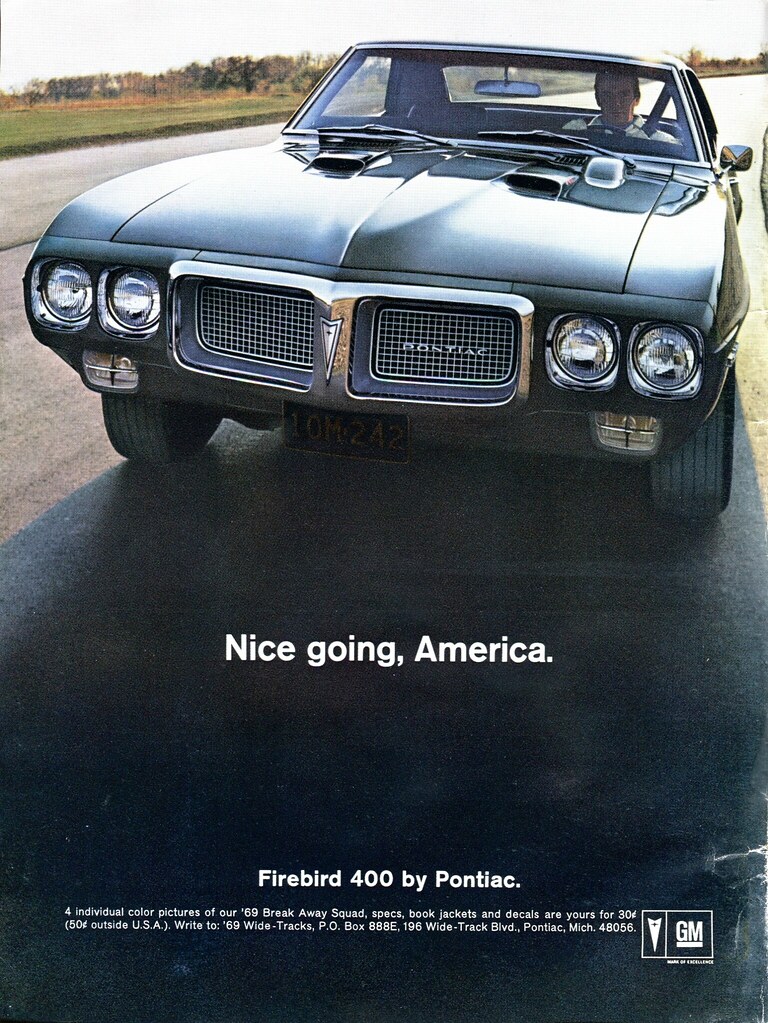
2. **1969 Pontiac Firebird 400 – Raw and Refined**As the 1960s roared towards their conclusion, the 1969 Firebird 400 arrived, a glorious symphony of muscle and style, achieving a blend that few other pony cars managed with such panache. Under that impressively long hood resided the heart of the beast: a 400 cubic inch V8 engine, delivering a robust 330 horsepower. For those who craved an extra dose of ferocity, the Ram Air variants bumped performance even further, ensuring that the Firebird 400 was never anything less than thrilling.
This was a car built for engagement, offering drivers a genuine connection to the road. You could opt for a precise 4-speed manual gearbox, choose distinctive Rally II wheels that perfectly complemented its aggressive stance, and even enjoy the unique flair of a factory hood tachometer, a feature that screamed performance from the driver’s perspective. Pontiac sold over 87,000 Firebirds in 1969, but only a fraction of these were the coveted 400-equipped models, making them a special find for enthusiasts.
The Firebird’s design was simply iconic. Its long hood and short deck proportions were nothing short of sharp, giving it an undeniable predatory look that commanded attention. Inside, the cabin had a real presence, with its distinctive dual-pod gauges and deeply sculpted bucket seats that embraced the driver. Despite its undeniable charisma and performance credentials, these particular models are still considered by some to be “undervalued compared to Camaros of the same era,” presenting a fantastic opportunity for the discerning collector.
Indeed, “As Pontiac’s long-time sports car, the Firebird was bound to be popular. It shot out of the gate after its 1967 introduction and stayed a favorite through nearly four decades of production.” This longevity speaks volumes about its inherent appeal and the consistent evolution of its design and performance. “The classic 1967 pony car evolved through the years to eventually become a modern performance machine while keeping true to its muscle car roots,” a balancing act performed with impressive skill.
The allure of the Firebird, particularly these early, powerful versions, continues to grow. “Owning nearly any year Firebird is a good investment, particularly the early models.” While you might still find more accessible examples, “well-preserved examples of later models are also likely to appreciate in value,” meaning that a 1969 Firebird 400, in all its raw and refined glory, is certainly a treasure worth pursuing.
Car Model Information: 2019 Mazda CX-5 Grand Touring Reserve
Name: Pontiac Firebird
Caption: The second, third, and fourth generations of,the Pontiac Firebird Trans Am
Manufacturer: Pontiac (automobile)
Production: February 23, 1967 – August 30, 2002
ModelYears: 1967 – 2002
Class: Pony car,Muscle car
Platform: GM F platform
Related: Chevrolet Camaro
Layout: Front engine, rear-wheel-drive layout
Categories: 1970s cars, 1980s cars, 1990s cars, 2000s cars, All articles with dead external links
Summary: The Pontiac Firebird is an American automobile built and produced by Pontiac from the 1967 to 2002 model years. Designed as a pony car to compete with the Ford Mustang, it was introduced on February 23, 1967, five months after GM’s Chevrolet division’s platform-sharing Camaro. This also coincided with the release of the 1967 Mercury Cougar, Ford’s upscale, platform-sharing version of the Mustang.
The name “Firebird” was also previously used by GM for the General Motors Firebird series of concept cars in the 1950s.
Get more information about: Pontiac Firebird
Buying a high-performing used car >>>
Brand: Pontiac Model: Firebird 400
Price: $20,961 Mileage: 52,000 mi.
Read more about: Revving Up History: Unearthing the Forgotten Engines That Forged American Muscle Legends
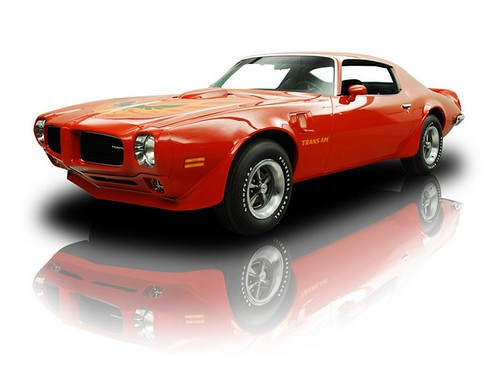
3. **1973 Pontiac Trans Am SD-455 – Built for Torque**Now, for something truly special, something that arrived as the muscle car era was supposedly on its last legs: the 1973 Trans Am with the legendary Super Duty 455 engine. This wasn’t just another performance variant; it was, without exaggeration, “one of the most serious muscle cars of the era.” While officially rated at a conservative 290 horsepower, the SD-455 was famously and heavily underrated, built more like a full-blown race motor than a street engine. We’re talking reinforced block, forged internals, and round-port heads – components usually reserved for the track.
This meant the SD-455 didn’t just make power; it made colossal, earth-shaking torque. It “pulled hard through the midrange and didn’t quit early,” delivering a relentless surge of acceleration that could humble many supposed rivals. This raw power, combined with its dramatic styling, made it an instant legend. Its rarity only adds to its mystique; a mere 252 SD-455 Trans Ams were built in ’73, making them incredibly rare and, consequently, highly collectible today. Owning one is owning a significant piece of automotive defiance.
The visual impact of the ’73 Trans Am SD-455 was as profound as its performance. The iconic shaker hood, sitting proudly through a hole in the bonnet, vibrated with every engine pulse, a visceral connection to the machinery beneath. Honeycomb wheels and color-matched accents further accentuated its unique, aggressive look, ensuring it stood out in any crowd. Inside, you weren’t just sitting in a car; you were strapping into a machine with “real performance seats” that felt “ready for the strip—or the street,” embodying pure, unadulterated intent.
This incredible machine was a testament to Pontiac’s refusal to give up on performance, even as emissions regulations tightened their grip. “Pontiac held out longer than others by offering the big-block Super Duty 455 V8 through 1974,” showcasing their commitment to delivering genuine muscle to their enthusiasts. While many brands were detuning their engines into submission, Pontiac doubled down, creating an engine that was truly special and virtually bulletproof.
Today, the 1973 Trans Am SD-455 is more than just a car; it’s an artifact, a loud, defiant roar from an era that refused to go quietly. Its sheer brute force and incredible rarity make it a cornerstone for any serious muscle car collection. Its value continues to reflect its status as a genuine performance icon, a machine that truly knew how to deliver torque with a capital T.
Car Model Information: 2019 Mazda CX-5 Grand Touring Reserve
Name: Pontiac Firebird
Caption: The second, third, and fourth generations of,the Pontiac Firebird Trans Am
Manufacturer: Pontiac (automobile)
Production: February 23, 1967 – August 30, 2002
ModelYears: 1967 – 2002
Class: Pony car,Muscle car
Platform: GM F platform
Related: Chevrolet Camaro
Layout: Front engine, rear-wheel-drive layout
Categories: 1970s cars, 1980s cars, 1990s cars, 2000s cars, All articles with dead external links
Summary: The Pontiac Firebird is an American automobile built and produced by Pontiac from the 1967 to 2002 model years. Designed as a pony car to compete with the Ford Mustang, it was introduced on February 23, 1967, five months after GM’s Chevrolet division’s platform-sharing Camaro. This also coincided with the release of the 1967 Mercury Cougar, Ford’s upscale, platform-sharing version of the Mustang.
The name “Firebird” was also previously used by GM for the General Motors Firebird series of concept cars in the 1950s.
Get more information about: Pontiac Firebird
Buying a high-performing used car >>>
Brand: Pontiac Model: Trans Am
Price: $20,961 Mileage: 52,000 mi.
Read more about: Unleashing Raw Power: 14 Legendary 1970s Muscle Cars Every Enthusiast Needs to Know
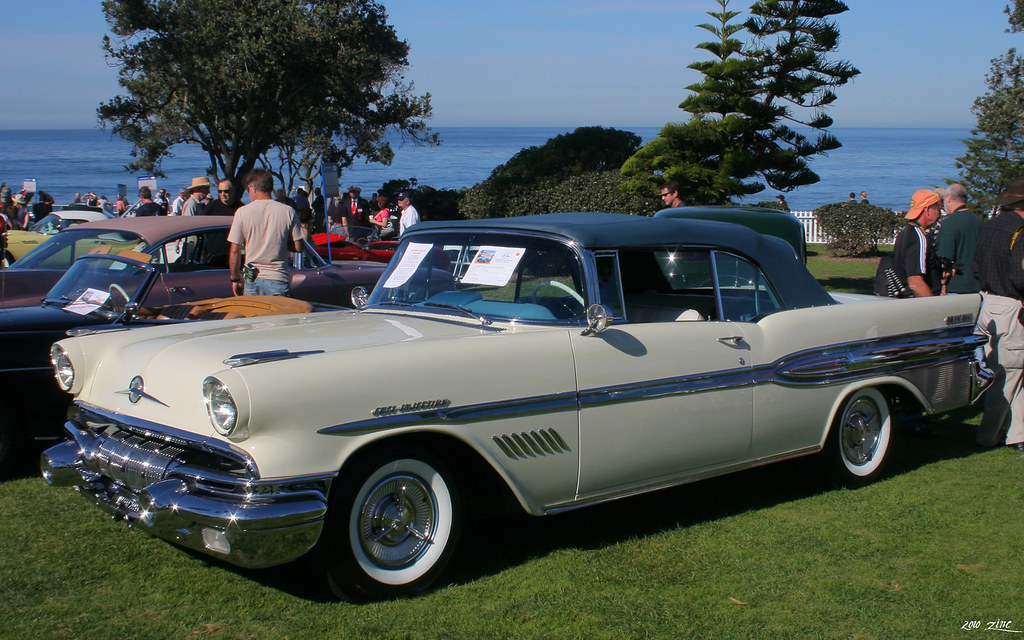
4. **1957 Pontiac Bonneville – Fuel Injection in the ’50s**Cast your minds back to 1957, an era when chrome was king and tailfins were growing ever more extravagant. In the midst of this flamboyant automotive landscape, Pontiac dropped a bombshell: the Bonneville hardtop convertible. This wasn’t just another pretty face; it came equipped with a revolutionary fuel-injected 347 V8, producing a staggering 310 horsepower. For the time, that was a seriously impressive number, pushing the boundaries of what was expected from a luxury-performance car.
Exclusivity was baked into the Bonneville’s very DNA. It was available in just one breathtaking color combination: the elegant Kenya Ivory over a vibrant Bonneville Red, a pairing that epitomized 1950s glamour. Furthermore, every single one of these magnificent machines came fully loaded, boasting power features and luxury touches that were cutting-edge for the era. This was Pontiac showcasing its technological prowess and commitment to high-end motoring.
Its rarity today only amplifies its appeal. With only 630 units ever made, the 1957 Bonneville is a true limited-production classic, a shimmering gem from an age of burgeoning automotive innovation. The car’s wide, confident grille, those distinctive long tailfins, and its unique trim ensured it stood out effortlessly. However, it was the mechanical fuel injection system that truly stole the headlines, representing “rare tech in a full-size car,” and instantly bestowing “Pontiac serious credibility” in the realm of advanced engineering.
While the 1958 Bonneville is often credited with igniting Pontiac’s performance image, the 1957 model was its pioneering predecessor, setting the stage. The 1958 version saw Simon “Bunkie” Knudsen take a Star Chief model and give it a full makeover, improving the design and adding those gorgeous rocket engine-mimicking rear ends. But the ’57 was the initial, bold statement of luxury, power, and technological ambition that foreshadowed Pontiac’s future direction.
The 1957 Bonneville stands as a magnificent testament to Pontiac’s ambition during a pivotal decade. It wasn’t just about looking good; it was about pushing technological boundaries and delivering an unparalleled driving experience for its time. This car, with its sophisticated fuel injection and lavish appointments, truly solidified Pontiac’s place as a forward-thinking brand, a vision of what the future of American motoring could be.
Car Model Information: 1964 Pontiac Bonneville
Name: Pontiac Bonneville
Caption: 2000–2005 Pontiac Bonneville
Manufacturer: Pontiac (automobile)
Production: 1958–2005,1983–2005 (Canada)
Assembly: Pontiac Assembly,Pontiac, Michigan
Class: Full-size car
Layout: FR layout
Predecessor: Pontiac Star Chief,Pontiac Executive
Successor: Pontiac G8
Categories: 1950s cars, 1960s cars, 1970s cars, 1980s cars, 1990s cars
Summary: The Pontiac Bonneville is a model line of full-size or mid-size rear-wheel drive (until 1987) or front-wheel drive cars manufactured and marketed by Pontiac from 1957 until 2005.
The Bonneville (marketed as the Parisienne in Canada until 1981), and its platform partner, the Grand Ville, are some of the largest Pontiacs ever built; in station wagon body styles they reached just over 230 inches (5.8 m) long. They were also some of the heaviest cars produced at the time at 5,000 pounds (2,300 kg) or more.
The Bonneville nameplate was introduced as a limited production performance convertible during the 1957 model year, its name taken from the Bonneville Salt Flats in Utah, an early site of U.S. automobile racing and numerous world land speed records.
Get more information about: Pontiac Bonneville
Buying a high-performing used car >>>
Brand: Pontiac Model: Bonneville
Price: $79,999 Mileage: 1,376 mi.

5. **1967 Pontiac Grand Prix Convertible – Understated Muscle**The 1967 Grand Prix convertible is often overshadowed by its flashier GTO and Trans Am siblings, but this is a car that absolutely deserves a much closer look. It’s a masterclass in understated muscle, blending sophistication with serious performance. Standard power came from a potent 400 cubic inch V8, delivering a healthy 350 horsepower, and for those who craved even more grunt, a monstrous 428 was available as an option. This was big-car performance done right, with an elegance that belied its raw power.
Adding to its allure is its sheer rarity; only 5,856 Grand Prix convertibles were built in 1967, making it a truly exclusive machine. Its distinctive styling, featuring hidden headlights, a commanding long hood, and a genuinely upscale interior, gave it a real presence on the street. It was the kind of car that made an impression without shouting, exuding a quiet confidence and timeless charm. This was luxury with an edge, designed for those who appreciated both speed and style.
What truly defined the ’67 Grand Prix convertible was its unique character: it offered an exquisite combination of comfort, imposing size, and exhilarating speed, all “without drawing too much attention.” It’s one of those wonderfully “overlooked classics that’s starting to gain serious interest” from collectors and enthusiasts who recognize its unique blend of attributes. It’s the kind of car that rewards a deeper appreciation, a true connoisseur’s choice in the muscle car landscape.
This particular model also ties into the broader Grand Prix lineage, a line that had a clear mission from its inception. “Using the Catalina platform as its foundation, Pontiac created the Grand Prix personal luxury coupe for the 1962 model year to compete directly with the Ford Thunderbird.” This ambition to rival a prestigious model like the Thunderbird immediately established the Grand Prix’s premium standing, and right from the start, “performance was a core part of the car’s identity,” as its very name, borrowed from historic automobile racing, suggested.
The ’67 Grand Prix convertible perfectly encapsulated this philosophy. “First-generation models came with engine options ranging from 300 to 400 hp, making the Grand Prix a potent street racer, particularly when equipped with the 421 Super Duty.” It was a car that didn’t just offer luxury; it provided exhilarating performance in a sophisticated package, proving that you could have both elegance and a thrilling ride. It remains an exceptional testament to Pontiac’s ability to blend seemingly disparate qualities into a truly desirable classic.
Car Model Information: 2019 Mazda CX-5 Grand Touring Reserve
Name: Pontiac Grand Prix
Caption: 2004–2008 Pontiac Grand Prix
Manufacturer: Pontiac (automobile)
ModelYears: 1962–2008
Class: Personal luxury car
Layout: Front-engine, rear-wheel-drive layout
Successor: Pontiac G8
Platform: unbulleted list
Categories: 1960s cars, 1970s cars, 1980s cars, 1990s cars, 2000s cars
Summary: The Grand Prix is a line of automobiles produced by the Pontiac Division of General Motors from 1962 until 2002 as coupes and from 1989 through 2008 model years as four-door sedans.
First introduced as a full-size performance coupe for the 1962 model year, the model repeatedly varied in size, luxury, and performance over successive generations. The Grand Prix was the most expensive coupe Pontiac offered until the 1970s, when the Bonneville Brougham and the Firebird Trans Am became more exclusive; the Grand Prix moved into the intermediate personal luxury car and later the mid-size market segments.
All Grand Prixs from 1962 through 1972 were pillarless hardtops (except for the 1967 convertible).
Get more information about: Pontiac Grand Prix
Buying a high-performing used car >>>
Brand: Pontiac Model: Grand Prix
Price: $20,961 Mileage: 52,000 mi.
Read more about: Revving Up History: Unearthing the Forgotten Engines That Forged American Muscle Legends

6. **1977 Pontiac Can Am – One-Year Wonder**Now, prepare yourselves for a truly ephemeral gem, a flash of brilliance that burned brightly for just a single, glorious year: the 1977 Pontiac Can Am. Born from the LeMans platform, this was Pontiac’s spirited attempt at a muscle car revival during a rather drab period in automotive history. It arrived like a breath of fresh, octane-laced air, offering a tantalizing glimpse of the brand’s enduring performance DNA, packaged in a shape that truly stood out from the crowd.
Underneath that distinctive shaker hood scoop, you’d find a choice of formidable powerplants: either a 6.6-liter 400 cubic inch V8 or, in some rare instances, a mighty 455 V8. This wasn’t just about the engine, though. The Can Am was visually aggressive, boasting special graphics and spoilers that instantly screamed ‘Trans Am’ but in a family sedan’s body. It was a proper wolf in sheep’s clothing, or perhaps more accurately, a Trans Am wearing sensible trousers, waiting to unleash its inner beast.
However, destiny had other plans for this promising machine. Pontiac initially harbored ambitions to build around 5,000 units, but alas, production was cut short due to frustrating supplier issues. This unforeseen hiccup inadvertently turned the Can Am into a rarity, with only approximately 1,377 units ever seeing the light of day. This scarcity, combined with its undeniable V8 power, makes it an absolute sleeper in the classic car market and, for the astute collector, a remarkably solid investment. It’s the kind of car that quietly appreciates while others shout about their existence.
Car Model Information: 2019 Mazda CX-5 Grand Touring Reserve
Categories: 1970s cars, Articles with short description, Mid-size cars, Pontiac vehicles, Short description matches Wikidata
Summary: The Pontiac Can Am is a midsize muscle car built by Pontiac and based on the Pontiac LeMans and the Pontiac Grand Am. The Can Am was a special edition option package and was only available in 1977. It was named for the Can Am racing series, continuing the race theme used for the Pontiac Grand Prix, LeMans and Trans Am.
Get more information about: Pontiac Can Am
Buying a high-performing used car >>>
Brand: Pontiac Model: Can Am
Price: $20,961 Mileage: 52,000 mi.
Read more about: The Road to Ruin: 15 Foreign Fails That America Just Couldn’t (or Wouldn’t) Understand

7. **1989 Pontiac Turbo Trans Am – GNX Power in a Pontiac**Fast forward to 1989, and Pontiac pulled a masterstroke, a moment of pure genius that combined cross-brand engineering with a dose of audacious performance. For the 20th Anniversary Turbo Trans Am, they quite simply borrowed the legendary 3.8-liter turbocharged V6 engine straight from Buick’s mighty GNX. The result? A Trans Am that, despite its lack of a thunderous V8 rumble, could outrun many of its big-engined contemporaries with astonishing ease.
Officially, this turbocharged marvel was rated at a rather humble 250 horsepower. But as any enthusiast knows, official figures are sometimes just a polite suggestion. Real-world tests quickly unveiled the truth: this machine was a genuine rocket, launching from 0 to 60 mph in under 5 seconds and scorching the quarter-mile in a blistering 13 seconds. This was supercar performance in a package that blended classic Trans Am styling with a modern, turbocharged punch.
Exclusivity was, once again, a defining characteristic. A mere 1,555 examples of the Turbo Trans Am were ever produced, each one loaded with desirable features. We’re talking about the fantastic WS6 suspension, plush leather Recaro seats that cradled you through aggressive cornering, and the coveted Indy 500 pace car badges, proudly proclaiming its high-speed heritage. It was a quiet storm, a car that didn’t need to roar to make its presence felt.
Today, the 1989 Turbo Trans Am stands as a testament to Pontiac’s innovative spirit right before the 1990s truly kicked in. It’s quiet, devastatingly fast, and now, highly collectible. This wasn’t just a car; it was one of the smartest, most unexpected moves Pontiac ever made, proving that true performance doesn’t always need to announce itself with a V8 symphony – sometimes, a whisper of forced induction is far more effective.
Car Model Information: 2019 Mazda CX-5 Grand Touring Reserve
Name: Pontiac Firebird
Caption: The second, third, and fourth generations of,the Pontiac Firebird Trans Am
Manufacturer: Pontiac (automobile)
Production: February 23, 1967 – August 30, 2002
ModelYears: 1967 – 2002
Class: Pony car,Muscle car
Platform: GM F platform
Related: Chevrolet Camaro
Layout: Front engine, rear-wheel-drive layout
Categories: 1970s cars, 1980s cars, 1990s cars, 2000s cars, All articles with dead external links
Summary: The Pontiac Firebird is an American automobile built and produced by Pontiac from the 1967 to 2002 model years. Designed as a pony car to compete with the Ford Mustang, it was introduced on February 23, 1967, five months after GM’s Chevrolet division’s platform-sharing Camaro. This also coincided with the release of the 1967 Mercury Cougar, Ford’s upscale, platform-sharing version of the Mustang.
The name “Firebird” was also previously used by GM for the General Motors Firebird series of concept cars in the 1950s.
Get more information about: Pontiac Firebird
Buying a high-performing used car >>>
Brand: Pontiac Model: Turbo Trans Am
Price: $20,961 Mileage: 52,000 mi.
Read more about: Revving Up History: Unearthing the Forgotten Engines That Forged American Muscle Legends

8. **1965 Pontiac 2+2 – The Full-Size GTO**Ah, the 1965 Pontiac 2+2. This is one of those wonderfully discreet machines that, for too long, has lurked in the shadows of its more famous GTO sibling. Yet, to call it merely a ‘full-size GTO’ is to give it immense credit, and rightly so. This wasn’t some watered-down interpretation; this was a serious performance car, built for those who wanted muscle car thrills but in a grander, more spacious package. It was, in essence, a sophisticated brute with a surprising turn of pace.
Underneath its imposing bonnet lay a potent 421 cubic inch V8, capable of churning out a breathtaking 376 horsepower. That’s more grunt than many mid-size cars of the era could even dream of, making the 2+2 a formidable force on any road. It came standard with heavy-duty suspension, ensuring it could handle its prodigious power, and a dual exhaust setup that promised a suitably glorious soundtrack. This was a car that meant business, but with a refined demeanor.
Its interior was a masterclass in understated sportiness and comfort. You’d find inviting bucket seats, tasteful woodgrain trim, and a full complement of gauges, all designed to give the driver a sense of being in command of something truly special. This wasn’t just a basic cruiser; it was a big car with a real bite, blending luxury with exhilarating performance in a way that truly captivated.
Rarity also plays a significant role in its appeal today. Only 11,519 hardtops and a mere 1,807 convertibles were sold in that pivotal year. These numbers ensure it remains a distinctive find for collectors. It’s one of the best-kept secrets in Pontiac’s rich performance history, a car that offers immense value without yet reaching the stratospheric prices of its more celebrated kin. If you’re looking for an overlooked classic with serious potential, the 2+2 is calling your name.
Car Model Information: 2019 Mazda CX-5 Grand Touring Reserve
Name: Pontiac 2+2
Caption: 1965 Pontiac 2+2 Sports Coupe
Aka: Parisienne 2+2 (Canada)
Manufacturer: Pontiac (automobile)
Class: Full-size car
Production: 1964—1967 in the U.S.
Assembly: Pontiac Assembly,Pontiac, Michigan,Arlington Assembly,Arlington, Texas,Doraville Assembly,Doraville, Georgia,Fairfax Assembly,Kansas City, Kansas,Linden Assembly,Linden, New Jersey,South Gate Assembly,South Gate, California
BodyStyle: coupe,convertible
Engine: Pontiac V8 engine#389
Transmission: 3 or 4-speed manual, 3-speed automatic
Length: 214 in
Abbr: on
Height: 48 in
Wheelbase: 121 in
Related: Pontiac Catalina
Categories: 1970s cars, 2+2 coupés, All articles with unsourced statements, Articles with short description, Articles with unsourced statements from March 2017
Summary: The Pontiac 2+2 is a full size automobile that was manufactured by Pontiac, built on the B-body chassis. It debuted for the 1964 model year as a trim-only option for the Pontiac Catalina, with special door panels, bucket seats with a center console, and exterior badging. Pontiac marketed the 2+2 as the “big brother” to the popular Pontiac GTO.
Beginning in 1965 the name Catalina was no longer found on the car, although it was still an option on the Catalina. The 2+2 was equipped with a 421 cu in (6.9 L) V8 engine, dual exhaust, heavy-duty front springs as well as unique exterior body trim. It continued on the same platform, but became a separate Pontiac series for the 1966 model year. The 2+2 reverted to an option on the Catalina for 1967 and was discontinued in the United States the same year due to poor sales.
It continued as a series in Canada until 1970. All Canadian-built 2+2s were equipped with a Pontiac body on a Chevrolet chassis, with the full range of Chevrolet engines available from inline 6-cylinder to big-block V8.
The name 2+2 reappeared briefly in 1986 on the Pontiac Grand Prix 2+2 G-body “aerobody” coupe, of which 1,225 were built.
Get more information about: Pontiac 2+2
Buying a high-performing used car >>>
Brand: Pontiac Model: 2+2
Price: $20,961 Mileage: 52,000 mi.
Read more about: Get Ready to Rev Your Engines: A Deep Dive Into Val Kilmer’s Jaw-Dropping Car Collection, Both On-Screen and Off!

9. **2006 Pontiac GTO – The Aussie Muscle Import**Then, we arrive at a fascinating chapter in the GTO saga: the 2006 Pontiac GTO, affectionately known as ‘The Aussie Muscle Import.’ This was Pontiac’s bold attempt to resurrect a legendary nameplate, and they did so by looking across the Pacific to Australia, rebadging the formidable Holden Monaro. By 2006, this car had matured into an absolute powerhouse, packing a monstrous 6.0L LS2 V8 engine, unleashing a glorious 400 horsepower, typically paired with a robust T-56 6-speed manual transmission.
This was a GTO for the modern era, a clean, low-profile package that didn’t shout its intentions but absolutely delivered on its promise of raw, unadulterated muscle under the skin. It was subtle, almost to a fault, which unfortunately led many buyers at the time to pass it over, often mistaking its refined lines for something more akin to a contemporary Grand Prix. It was a performance titan hiding in plain sight.
However, time, as it often does, has proven the critics wrong. The 2006 GTO’s performance credentials, its exceptional build quality derived from its Holden origins, and its bulletproof LS drivetrain have aged remarkably well. It’s a car that provides a thoroughly modern driving experience with classic muscle car heart, making it an increasingly desirable classic.
With only 13,948 units sold in 2006, this iteration of the GTO boasts respectable scarcity. Today, clean examples are not just holding their value; they are steadily climbing, especially thanks to the enduring popularity of the LS platform and those appealingly low production numbers. This GTO might have been misunderstood in its youth, but it’s now rightfully recognized as a fantastic example of modern muscle with a very bright future.
Car Model Information: 1966 Pontiac GTO Coupe
Name: Pontiac GTO
Caption: 2005 Pontiac GTO
Manufacturer: Pontiac (automobile),Holden
Class: Mid-size car,Compact car,Mid-size car
Production: 1963–1974,2003–2006
Predecessor: Pontiac Tempest
Layout: Front-engine, rear-wheel-drive layout
ModelYears: 1964-1974 2004-2006
Categories: 1970s cars, 2000s cars, All articles with unsourced statements, Articles with short description, Articles with unsourced statements from October 2008
Summary: The Pontiac GTO is a front-engine, rear-drive, two-door, and four-passenger automobile manufactured and marketed by the Pontiac division of General Motors over four generations from 1963 until 1974 in the United States — with a fifth generation made by GM’s Australian subsidiary, Holden, for the 2004 through 2006 model years.
The first generation of the GTO is credited with popularizing the muscle car market segment in the 1960s. Some consider the Pontiac GTO to have started the trend with all four domestic automakers offering a variety of competing models.
For the 1964 and 1965 model years, the GTO was an optional package on the intermediate-sized Pontiac LeMans. The 1964 GTO vehicle identification number (VIN) started with 22, while the 1965 GTO VIN began with 237. The GTO was designated as a separate Pontiac model from 1966 through 1971 (VIN 242…). It became an optional package again for the 1972 and 1973 intermediate LeMans. For 1974, the GTO was an optional trim package on the compact-sized Ventura.
The GTO model was revived for the 2004 through 2006 model years as a captive import for Pontiac, a left-hand drive version of the Holden Monaro, itself a coupé variant of the Holden Commodore.
Get more information about: Pontiac GTO
Buying a high-performing used car >>>
Brand: Pontiac Model: GTO
Price: $59,991 Mileage: 4,408 mi.
Read more about: Remember These? 14 Classic Cars From the 1980s That Everyone Forgot About
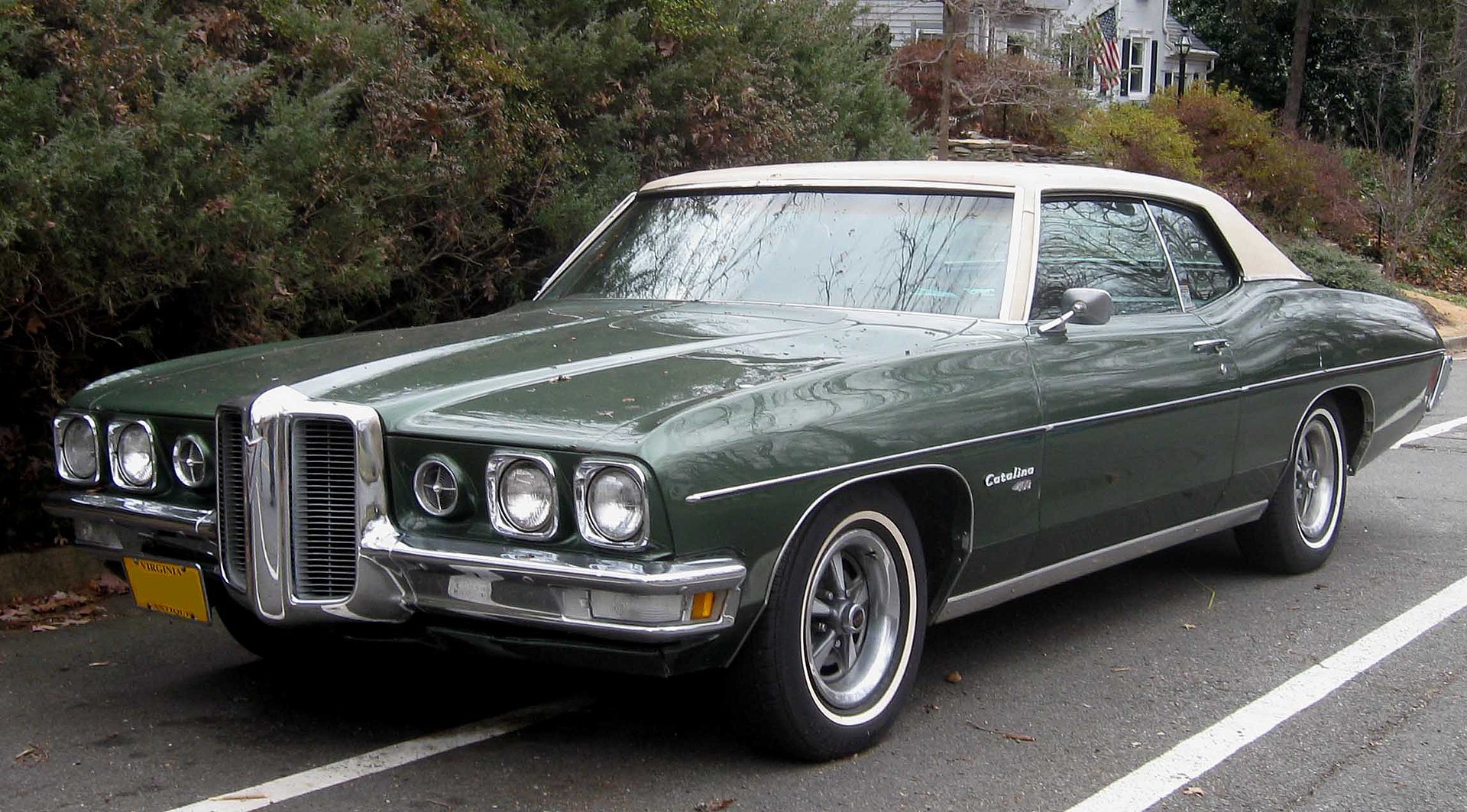
10. **1963 Pontiac Catalina Super Duty – Race-Ready from the Factory**And finally, we reach the zenith, the ultimate expression of Pontiac’s racing DNA, a car built with one singular, uncompromising purpose: winning drag races. Feast your eyes upon the 1963 Pontiac Catalina Super Duty. This wasn’t just a performance option; this was a factory-built hot rod, a no-compromise machine that rolled off the assembly line ready to dominate the strip, shedding every ounce of unnecessary weight and packing an unholy amount of power.
To achieve its race-ready status, the Catalina Super Duty embraced a series of radical modifications. It sported an aluminum front end, a conspicuous radio delete (because who needs tunes when you have the symphony of a roaring engine?), and at its heart, a magnificent 421 cubic inch V8. This engine was a legend in itself, producing an astonishing 405 horsepower, a figure that was truly mind-bending for 1963.
But its reign, like many titans, was tragically brief. A mere 14 Super Duty Catalinas were built in that fateful year before NHRA rules shifted, effectively ending its era of factory-backed drag strip dominance. Each of these rare beasts came equipped with a proper 4-speed manual gearbox, heavy-duty internals designed for relentless abuse, and lightweight body panels, all meticulously crafted for pure, unadulterated speed. This was motorsport engineering in its purest, most brutal form.
Today, these 14 cars are more than just automobiles; they are hallowed relics, living legends of an era when manufacturers built true racing machines for the public. They stand among the most valuable Pontiacs ever made, and for supremely good reason. They were, without question, fast beyond belief, incredibly rare, and utterly focused on performance. Owning a 1963 Catalina Super Duty isn’t just owning a car; it’s owning a piece of automotive history, a visceral connection to the golden age of drag racing, and a testament to Pontiac’s unwavering commitment to speed.
Car Model Information: 1963 Pontiac Catalina Sport Coupe
Caption: 1970 Pontiac Catalina hardtop coupe
Name: Pontiac Catalina
Manufacturer: Pontiac (automobile)
Production: 1950–1981
Platform: GM B platform
Predecessor: Pontiac Chieftain
Successor: Pontiac Bonneville
Class: Full-size car
Layout: FR layout
Categories: 1960s cars, 1970s cars, 1980s cars, All articles needing additional references, All articles with unsourced statements
Summary: The Pontiac Catalina is a full-size automobile produced by Pontiac from 1950 to 1981. Initially, the name was a trim line on hardtop body styles, first appearing in the 1950 Chieftain Eight and DeLuxe Eight lines. In 1959, it became a separate model as the “entry-level” full-size Pontiac.
The Catalina was Pontiac’s most popular model, available in multiple body styles, and served as the donor platform for the popular Pontiac Grand Prix, Pontiac 2+2, Pontiac Ventura, and the Pontiac Safari station wagon.
When the second-generation Pontiac Tempest was introduced in 1964, lessons learned from the Catalina’s introduction of the Grand Prix led to the introduction of the Pontiac GTO, to include the 389 cu in (6.4 L) Pontiac V8.
Get more information about: Pontiac Catalina
Buying a high-performing used car >>>
Brand: Pontiac Model: Catalina
Price: $38,981 Mileage: 38,300 mi.
Read more about: The Engines That Defined an Era: From Historic Roars to Modern Thunder, Discover the Ultimate Muscle Car Powerhouses
What a ride it’s been, hasn’t it? From the audacious launch of the GTO, which practically invented the muscle car, to the raw, race-bred ferocity of the Catalina Super Duty, Pontiac consistently proved itself a master of engineering excitement. Even in its final years, with groundbreaking models like the Turbo Trans Am and the revived Aussie GTO, the brand’s innovative spirit and dedication to performance never faltered. These aren’t just mere machines of metal and rubber; they are vivid snapshots of an era, roaring monuments to American automotive ingenuity, each one a poignant reminder of the sheer passion and engineering brilliance that was tragically lost when the Pontiac badge faded from the automotive landscape. Perhaps it’s time to truly appreciate these magnificent beasts, not just for their increasing value, but for the indelible mark they left on our roads and in our hearts. They truly are worth every single penny.

